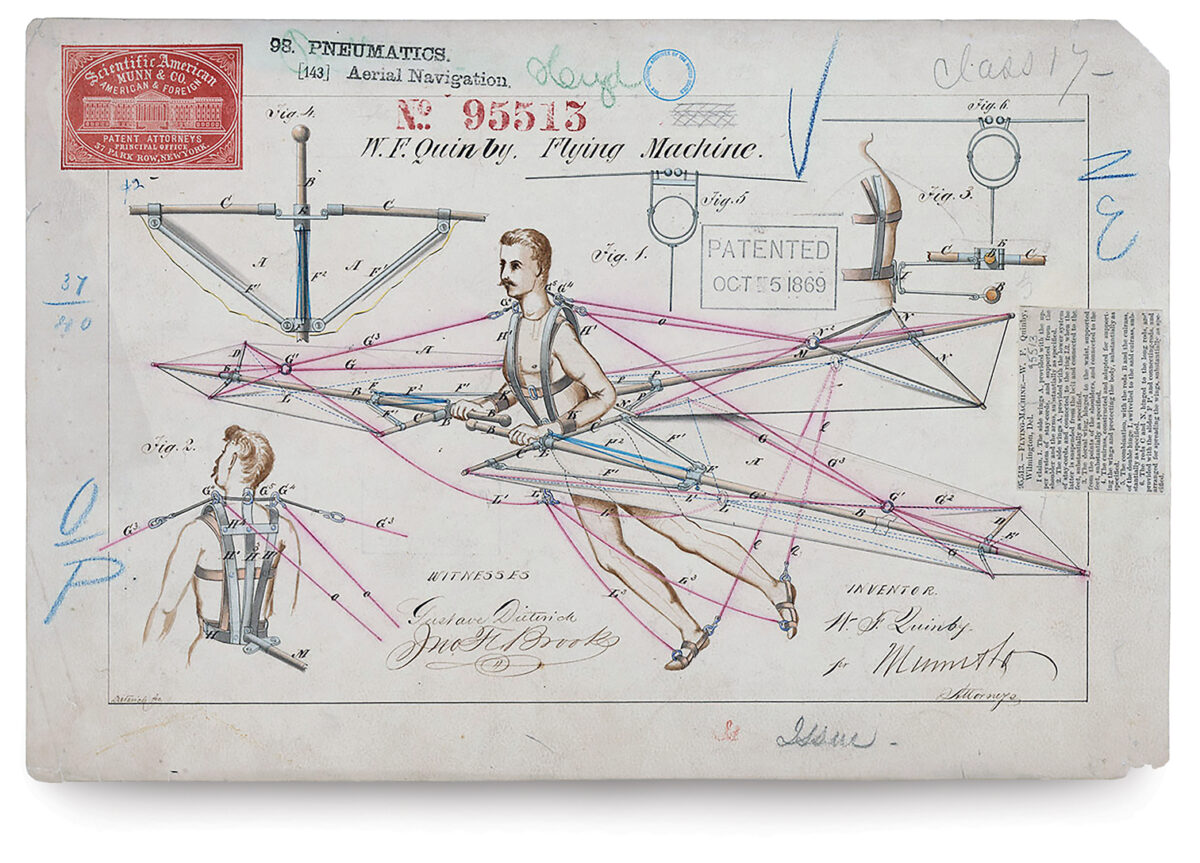On October 5, 1869, just more than four years after Lee surrendered to Grant at Appomattox Court House and 34 years before the Wright Brothers took off, Watson Fell Quinby was granted this patent for a human “Flying Machine.” The contraption used two side wings and a “dorsal wing,” supported by the shoulders and waist, powered by stay-cords attached to the feet, and guided or steered by hand. To our modern eyes, the device looks comical, of course. Had it worked, the old joke, “I just flew in from Newark, and boy are my arms tired,” would have been a reality. And it must have seemed ridiculous to those who lacked Quinby’s vision or foresight in an age without air travel.
“We hardly think he will be able to compete with the swallows in this harness,” an 1871 article in Scientific American quipped about Quinby’s invention. “We would advise him to start from some low point at first, so that, if he should fall down, it will not hurt him much.”
He did not heed this advice. Quinby, born in 1825 and a successful physician, reportedly built his machine secretly in his carriage house in Newport, Del. When it came time to test it, he donned a skin-tight suit, strapped the machine to his body, and leapt into the air from the roof of a small building. He soon discovered its failings. Fortunately, he was not seriously injured, and family members who had gathered to witness the flight test, rescued him from the wreckage. Quinby’s dream of flight was undeterred. He patented an improved “Flying Apparatus” in 1872 and “Aerial Ship” in 1879. Neither of those inventions ever took off, either.
He did live long enough to see powered air flight become a reality, and even become a factor in war. When he died in 1918 at the age of 93, the Wilmington Morning News penned his obituary, and wrote: “From boyhood Dr. Quinby delighted in mechanical experiment, and during his mature life has invented several useful devices since completing his airship, a rotary digger, a method of arch construction without the use of forms and centers, a conduit for underground wires and pipes.”
This story appeared in the 2024 Winter issue of American History magazine.
historynet magazines
Our 9 best-selling history titles feature in-depth storytelling and iconic imagery to engage and inform on the people, the wars, and the events that shaped America and the world.






